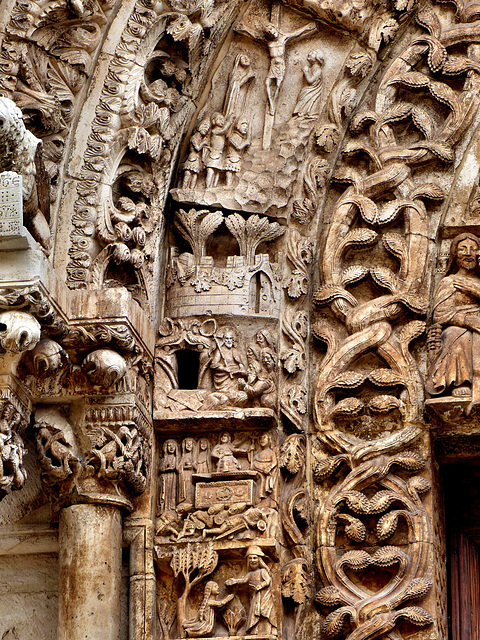Altamura - Cattedrale di Santa Maria Assunta
Altamura - Cattedrale di Santa Maria Assunta
Altamura - Cattedrale di Santa Maria Assunta
Altamura - Cattedrale di Santa Maria Assunta
Altamura - Cattedrale di Santa Maria Assunta
Altamura - Cattedrale di Santa Maria Assunta
Altamura - Cattedrale di Santa Maria Assunta
Gravina in Puglia
Gravina in Puglia - Concattedrale di Santa Maria A…
Gravina in Puglia - Concattedrale di Santa Maria A…
Gravina in Puglia - Concattedrale di Santa Maria A…
Gravina in Puglia - Concattedrale di Santa Maria A…
Gravina in Puglia - Ponte Acquedotto Viadotto dell…
Parco Nazionale dell'Alta Murgia
Cantoniera No. 2
Trani - San Giacomo
Trani - San Giacomo
Trani - San Giacomo
Trani - San Giacomo
Trani - San Martino
Trani - San Martino
Trani - Castello svevo
Trani - Alimentari
Altamura - Cattedrale di Santa Maria Assunta
Altamura - Cattedrale di Santa Maria Assunta
Altamura - Cattedrale di Santa Maria Assunta
Altamura - Cattedrale di Santa Maria Assunta
Altamura - Cattedrale di Santa Maria Assunta
Altamura - Cattedrale di Santa Maria Assunta
Altamura - Cattedrale di Santa Maria Assunta
Altamura - Cattedrale di Santa Maria Assunta
Altamura - Cattedrale di Santa Maria Assunta
Altamura - Cattedrale di Santa Maria Assunta
Matera - Convento di Sant'Agostino
Matera - San Pietro Caveoso
Matera - Purgatorio
Matera - Chiesa del Purgatorio
Matera
Matera - San Giuliano
Matera - San Giuliano o Madonna delle Grazie
Matera - San Pietro Barisano
Matera - Sassi
Matera - Cattedrale di Matera
Matera - Cattedrale di Matera
Matera - Cattedrale di Matera
Location
Lat, Lng:
You can copy the above to your favourite mapping app.
Address: unknown
You can copy the above to your favourite mapping app.
Address: unknown
See also...
Keywords
Authorizations, license
-
Visible by: Everyone -
All rights reserved
-
133 visits
Altamura - Cattedrale di Santa Maria Assunta


The area around the modern Altamura (pop 70.000) was inhabited in early times. There are Bronze Age tumuli and between the 6th and the 3rd century BC a massive line of megalithic walls was erected. This (later Roman) city was inhabited until the 10th century when it was reportedly looted by Saracens. A couple of centuries after Altamura was reportedly looted by the Saracens, it started to be inhabited again as Emperor Frederick II refounded the city (1232) and ordered the construction of the large Altamura Cathedral, which became one of the most venerated sanctuaries in Apulia.
Altamura was ruled by various feudal families, including the Orsini del Balzo and the Farnese (1538–1734), the latter responsible for the construction of numerous palaces and churches. In the past, Altamura also had a large castle, whose construction dated back to the 11th-13th century, which has been completely demolished.
Altamura Cathedral (Cattedrale di Santa Maria Assunta) was founded by Emperor Frederick II in 1232. In 1248, under pressure from Frederick, Pope Innocent IV declared Altamura exempt from the jurisdiction of the bishop of Bari, making it a "palatine church", that is the equivalent of a palace chapel. After heavy damage caused by an earthquake in 1316, it was renovated by Robert of Anjou.
Major changes were made to the cathedral in 1534, including switching the front and back around! The cathedral's main facade originally faced west but it now faces east.
The (breathtaking) attraction of Altamura Cathedral is its main portal, which has been dated to the 14th and 15th centuries. It is Gothic, but in an unusual local style with Byzantine and strong Romanesque influences. I would even see this as "Romanesque/Gothic". It is remarkable for its wealth of details and a large number of biblical scenes.
From top to bottom
The Crucifixion
Harrowing Hell
The Resurrection
Jesus Appears to Mary Magdalene
The last is a pretty rare icon. It refers to John 20,11-18
Altamura was ruled by various feudal families, including the Orsini del Balzo and the Farnese (1538–1734), the latter responsible for the construction of numerous palaces and churches. In the past, Altamura also had a large castle, whose construction dated back to the 11th-13th century, which has been completely demolished.
Altamura Cathedral (Cattedrale di Santa Maria Assunta) was founded by Emperor Frederick II in 1232. In 1248, under pressure from Frederick, Pope Innocent IV declared Altamura exempt from the jurisdiction of the bishop of Bari, making it a "palatine church", that is the equivalent of a palace chapel. After heavy damage caused by an earthquake in 1316, it was renovated by Robert of Anjou.
Major changes were made to the cathedral in 1534, including switching the front and back around! The cathedral's main facade originally faced west but it now faces east.
The (breathtaking) attraction of Altamura Cathedral is its main portal, which has been dated to the 14th and 15th centuries. It is Gothic, but in an unusual local style with Byzantine and strong Romanesque influences. I would even see this as "Romanesque/Gothic". It is remarkable for its wealth of details and a large number of biblical scenes.
From top to bottom
The Crucifixion
Harrowing Hell
The Resurrection
Jesus Appears to Mary Magdalene
The last is a pretty rare icon. It refers to John 20,11-18
- Keyboard shortcuts:
Jump to top
RSS feed- Latest comments - Subscribe to the comment feeds of this photo
- ipernity © 2007-2025
- Help & Contact
|
Club news
|
About ipernity
|
History |
ipernity Club & Prices |
Guide of good conduct
Donate | Group guidelines | Privacy policy | Terms of use | Statutes | In memoria -
Facebook
Twitter

Sign-in to write a comment.